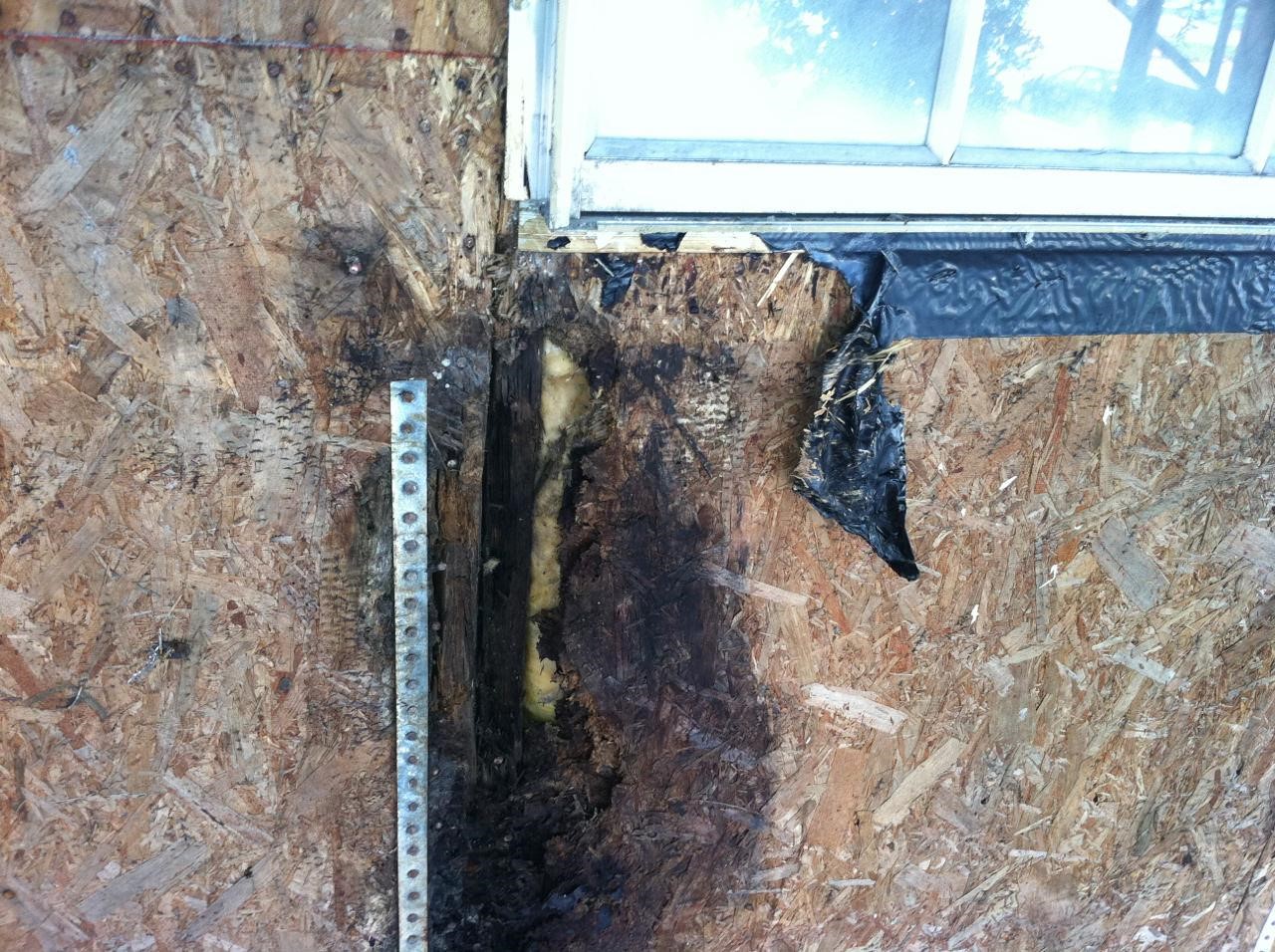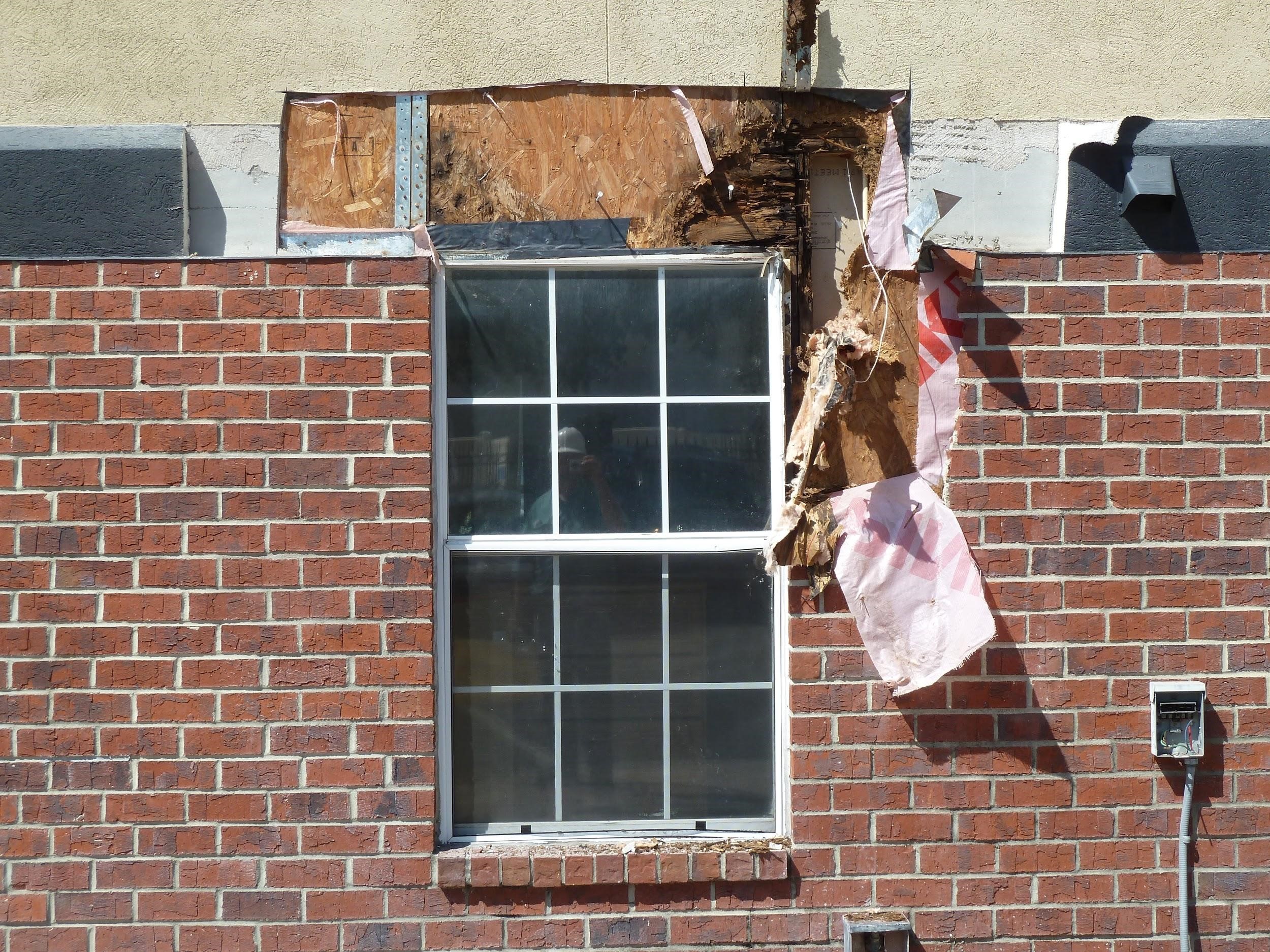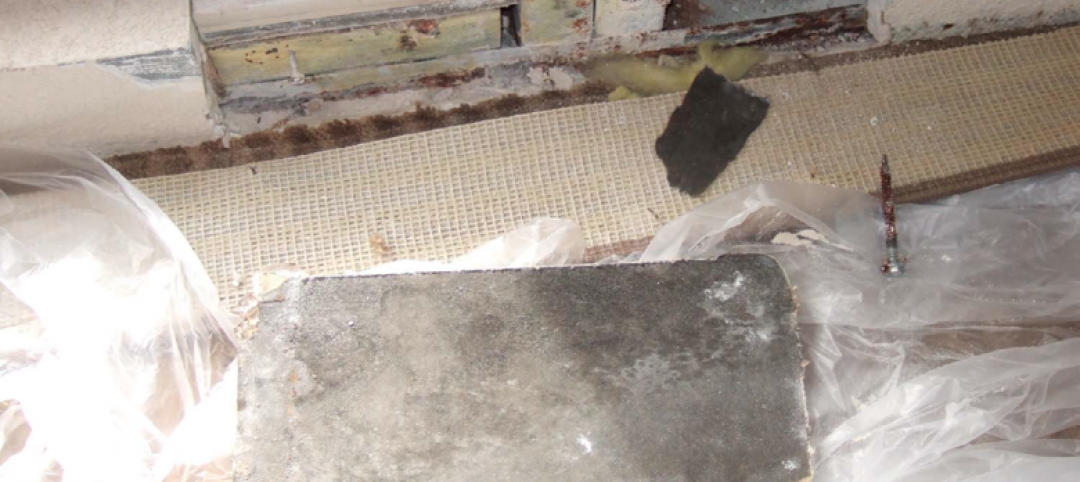Through a series of acquisitions, one of the largest student housing management companies in the country took over the management of a 30+-building university housing community over a decade ago.
Before too long, they were faced with a property management company’s worst nightmare: the entire complex had to undergo a $50M+ reconstruction after significant water intrusion was found to have deteriorated the building structure and after moisture and humidity from the HVAC/plumbing systems had resulted in large-scale hidden damage that included mold.
While there may have been some signs of the water intrusion inside the student apartments, the damage had not been obvious to the management firm. They had even signed a contract that included a clause intended to protect them from “original design or construction defects, deficiencies, errors, or omissions in workmanship”.
 In order to observe if defects and damage were present, the envelope had to be deconstructed. In this case, an improperly lapped window flashing diverted water directly to the OSB sheathing, bypassing the waterproofing protection of the envelope.
In order to observe if defects and damage were present, the envelope had to be deconstructed. In this case, an improperly lapped window flashing diverted water directly to the OSB sheathing, bypassing the waterproofing protection of the envelope.
Because of the age of the buildings, however, the only party left from whom the owner could pursue recovery was this new student housing management firm, who had only recently arrived on the scene. Before he knew it, the property manager was not only facing liability from reconstruction costs ranging in the high end of seven figures, but would also likely have been responsible for up to nine figures of potential bond default that had been issued to underwrite the project. On the eve of trial, however, the property management firm agreed to pay a low seven figures to settle the case.
An increasing number of legacy buildings, including aging student housing complexes, are experiencing similar water intrusion and mold-related damage that can be traced back to fundamental design and construction defects. Like the student housing mentioned above, many of these buildings have experienced water intrusion that results in hidden damage to the structure. Unfortunately, by the time the damage is discovered, the statute of limitations for the original designers and contractors has long since expired. As a result, the buck often stops with the liability insurance of the current student housing management firm, since this firm is considered the last man standing.
Regardless of where the root problem originated, management firms across the board are being held responsible for these types of defects if they haven’t taken steps to protect themselves. Managers of older student housing complexes who find themselves in this precarious position should understand that there are ways to manage their risks, and take action accordingly.
While work orders coming in can help property managers spot some damage patterns, they don’t always identify a systemic issue like hidden mold damage or water intrusion leading to structural deterioration.
Additionally, special projects done by outside vendors may reveal underlying damage and defects, but these vendors don’t always give good feedback to property management and thus systemic problems don’t become obvious.
 Not until full removal of the brick, decorative band, and stucco was the defect observable by the property management firm (or by anyone else, for that matter).
Not until full removal of the brick, decorative band, and stucco was the defect observable by the property management firm (or by anyone else, for that matter).
Most student housing properties undergo a summer turnover (cleaning the units in preparation for the new school year), but often the work is done in a very short time frame by outside vendors who aren’t looking to uncover underlying damage. By conducting quarterly inspections prior to cleaning and painting, property managers can increase their odds of exposing potential problems and gain insight into hidden moisture risks. They can also use the annual planned summer turnover to perform surveys of high-risk areas for potential water intrusion and mold problems.
Additionally, before acquiring a new property, a management firm should proceed cautiously. Due diligence should include assessing the building type and age, its geographic location and propensity for water problems, and then predicting the risk level that the building has hidden problems. Inspections for existing water intrusion should be thorough and should be done by a specialist rather than a generalist, who may even cut holes to look for hidden damage if necessary.
Since certain buildings have commonalities, using a peer review to examine the building’s original plans also can help greatly in predicting the potential of underlying problems.
Click here to read a more comprehensive blog on this issue.
One of the other conditions plaguing student housing today is air leakage due to air barrier failures. If you’re interested in learning more about this topic, plan to attend our free webinar on January 9.
About the Authors
George DuBose-CGC; Charles Allen, Jr.-AIA; and Donald B. Snell-PC, Cert. Mech Contractor, CIEC are all building experts at LBFG.
LBFG President George DuBose, with over 25 years’ experience in building failures and a focus on mold and moisture issues as well as HVAC and building envelope failures, is co-author of three manuals on IAQ and Mold Prevention, which have been used on over $4B in construction.
Mr. Allen, a Forensic Architect/Associate Vice President at LBFG with expertise in architectural forensics and big data analysis, has worked on investigating and remediating some of the largest and most complicated building failures in the world, particularly those centered around building envelopes, roofing systems, and wall systems.
Mr. Snell, a Senior Forensic Engineer/Vice President at LBFG with over 25 years’ experience with all aspects of HVAC systems, has used diagnostic and remedial solutions to help some of the largest commercial builders in the world with catastrophic moisture and mold intrusion resulting from HVAC failure.
LBFG has provided mold and moisture diagnoses and solutions for buildings to owners, contractors, and developers worldwide. The firm has project experience in the U.S., Canada, Mexico, the Caribbean, Central America, the Middle East, Southeast Asia, and Europe. Contact us at g.dubose@libertybuilding.com or by phone at 407/467-5518.
More from Author
George DuBose, CGC; Richard Scott, AIA, NCARB, LEED AP; and Donald B. Snell, PE, Cert. Mech. Contractor, CIEC | Feb 9, 2018
No building envelope is HVAC failure-proof
Building envelope & HVAC interaction in warm, humid zones
George DuBose, CGC; Richard Scott, AIA, NCARB, LEED AP; and Donald B. Snell, PE, Cert. Mech. Contractor, CIEC | Nov 15, 2017
“Till death do us part”: Preventing a facade and HVAC divorce when it comes to air barrier performance
Liberty Building Forensics Group (LBFG) has produced an e-book that speaks directly to the most common air barrier-related factors causing mold and moisture problems in hot and humid climates.








